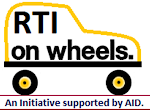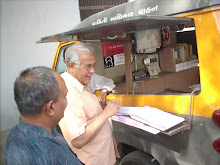Moneylife: National: Wednesday, 15th October
2025.
In this concluding part, Dr M Sridhar Acharyulu examines how the legislature, executive and judiciary have collectively undermined the spirit of transparency over two decades of the Right to Information Act. He also outlines what must be done to restore citizens’ right to know.
If part one examined how the Digital Personal Data Protection (DPDP) Act struck at the heart of transparency, this part looks inward — at how India’s own institutions weakened the Right to Information (RTI) from within.
When the RTI Act came into force in 2005, it was hailed as a revolutionary law. It promised to make the government accountable and empower citizens to question the state. Yet, 20 years later, the dream has been systematically eroded — by the legislature that diluted it, by the executive that ignored it and by the judiciary that often failed to defend it.
In a troubling twist of constitutional priorities, the government’s strategic invocation of the right to life—specifically its dimension of privacy—is being weaponised to undermine other fundamental rights. Under the guise of protecting privacy, the pillars of governance, transparency and the citizens’ right to information are being steadily eroded, while freedom of speech and expression face growing constraints. This inversion of constitutional values raises urgent questions about the balance between individual privacy and democratic accountability.
The legislature has violated its solemn duty to ensure transparency. The executive, with the support of the bureaucracy, has struggled and ultimately failed to protect the right to information. The judiciary, which delivers pravachanam (divine discourses) on good governance, has not practiced what it preached.
As expected, the RTI Act, 2005, marked a significant shift in Indian governance by institutionalising citizens' access to government-held information. Initially hailed as a revolutionary measure for ensuring transparency, promoting accountability and combating corruption, the RTI regime has since faced several challenges. These include legislative amendments that dilute its provisions, systemic delays, weakening of institutional autonomy and threats to RTI activists.
We need to critically evaluate the evolution and current status of RTI in India, the implications of recent developments—such as the 2019 RTI Amendment Act and the Digital Personal Data Protection Act, 2023—and propose concrete strategies for revitalising the RTI framework. The analysis draws on official data, state-level innovations and judicial interpretations, offering a balanced view of both the setbacks and enduring successes of the RTI regime. But none of the three estates was sincere.
The Congress left the mission of RTI
After a prolonged struggle for the right to transparency and good governance, the Right to Information Act came into force in 2005. In fact, it is not the full “right to know,” but just one small part of it. Yet, it proved to be a wonder.
It evolved in the second innings of the UPA, led by the Congress party, which, along with many progressive enactments, transformed the definition of good constitutional governance. We can proudly claim that the RTI Act, 2005, ushered in a transformative era in Indian governance by enabling citizens to access information from public authorities.
The three estates—executive, judiciary and legislature—together with part of the fourth estate (the media, despite its defects), gave rise to a new estate, the fifth estate: civil society. Unfortunately, all four estates disappointed the constitutional rule of law.
These hopes could not evolve into the real “estate” of a conscious society, with relevant information and education law. RTI became only a part of the right to know—an immature dream. It was a miscarriage of expectations. The dream was aborted, with the active support of all four estates.
The Legislature diluted the RTI. The Right to Education did not educate the Executive. If the government depends upon the interests of the rich and super-rich, land dealers become leaders, and the wealthy enter Parliament and Assemblies. They may then find better profits by selling off open plots around colleges, schools and even legislative estates.
RTI’s Impact on Democratic Accountability
The RTI Act helped expose scams. It empowered ordinary citizens to question public authorities, scrutinise expenditure and access official documents. Notable cases—such as the Adarsh Housing Scam, the Commonwealth Games Scam and revelations about black money—were enabled by RTI disclosures. The ability to access fund-utilisation records of members of parliament (MPs) and members of legislative assemblies (MLAs) has strengthened public oversight.
Further, RTI has spurred investigative journalism and digital activism. Platforms such as YouTube, Facebook and alternative media increasingly use RTI replies to expose governance failures.
Disclosure duty forgotten
Section 4 of the RTI Act mandates public authorities to proactively publish key information. Although this provision was initially enforced with some rigour, bureaucratic resistance and institutional inertia have undermined its effectiveness. However, certain state-level initiatives stand out:
Courts have consistently upheld the RTI Act’s broad mandate. For instance, the Karnataka High Court ruled that Nirmiti Kendra—a state-funded institute—falls within the RTI’s purview, penalising its refusal to disclose information. Such judicial interventions reinforce the RTI regime and reaffirm its relevance in contemporary governance.
The 2019 amendment to the RTI Act authorised the Central government to determine the tenure, salary and service conditions of information commissioners, undermining the original design of institutional independence. Scholars and civil society actors have argued that this opens the door for executive interference and political appointments, weakening the credibility of RTI adjudication bodies (Sathe, 2020). In short, RTI was killed with two amendments.
The next attack came from the executive, including political governments and supporting officers, who are conscious that RTI does not fit with their ethic of avoiding accountability. They simply do not believe in it. RTI implementation suffers from widespread institutional delays:
High rejection rates on technical grounds and excessive reliance on Section 8 exemptions by ministries have compromised the law’s accessibility and effectiveness.
The government is comfortable denying information, while the opposition does not object. Non-compliance is rampant. Additionally, RTI requests are strategically denied, including by key ministries, using Section 8 exemptions. In Delhi, 60% of RTI appeals are rejected over technicalities such as improper format or language. Most RTI applications are filed only to be rejected.
The RTI Act has its own provisions and funds allocated by the government. It was expected that RTI would awaken the people. But awareness, especially in rural areas, remains low—only 12% in rural and about 30% in urban India know about RTI. The infrastructure for RTI applications is insufficient, exacerbating inequities. At the same time, misuse through frivolous or vexatious RTI requests adds stress to the system and degrades its efficiency. That should not be the reason for diluting the transparency.
Erosion of the federal scheme
Many reformers have demanded the reinstatement of fixed tenures and compensation for information commissioners through legislation. But because the UPA made the law, the NDA will not agree. Nevertheless, such measures could safeguard commissions from executive interference, ensuring unbiased oversight.
The amendments are seen as a departure from the original intent of the RTI Act, which was based on a federal structure for the distribution of power, and a move towards centralised control. We need to:
Vacancies are predictable—the retirement dates are known in advance—yet governments delay appointments deliberately, creating defects and deficiencies that only enhance litigation. Appeals pile up in courts and commissions, while governance stagnates. We need to immediately:
Whistleblower Protection Act: Can they protect RTI users?
You may call it whistle-blowing or by any other beautiful name but, in reality, it is killing the “fighter”—those who apply RTI questions, only to be remembered later in garlanded photos. RTI activists regularly face violent backlash, including physical harm, intimidation, and false legal cases.
According to a 2023 report by the Commonwealth Human Rights Initiative, over 51 RTI activists have been murdered, and more than 300 have been harassed or assaulted since 2005. Strengthening and enforcing the Whistleblower Protection Act (2014) is essential. RTI users need real safeguards, not token promises. The need of the hour is to -
Public education campaigns on RTI rights are urgently required, especially in rural areas. Application processes should be simple, multilingual and accessible offline. Something that the government can do is -
Currently, genuine RTI seekers have only a slim chance of obtaining information. Success depends largely on conscientious officers at the first appellate stage. A culture of proactive support within departments can make the difference. This can easily be rectified by -
The dream of participatory governance envisions citizens actively involved in policymaking, implementation and accountability—fostering a transparent, responsive and inclusive democracy. RTI was meant to be the cornerstone of this vision.
However, despite its early promise, RTI faces existential threats. Successive governments have weakened their institutional architecture, constrained its scope and allowed inefficiencies to erode trust.
The dream model needs,
Still, a ray of light remains for lovers of transparency. Despite amendments and systemic challenges, the RTI Act has largely succeeded in improving accountability across India. The Act has exposed corruption, empowered citizens and strengthened democratic scrutiny. But amendments, institutional weaknesses and bureaucratic inertia have endangered its promise.
(Prof (Dr) M Sridhar Acharyulu is a former central information commissioner and professor at the School of Law, Mahindra University, Hyderabad. He writes frequently on transparency, governance, and citizens’ rights.)
In this concluding part, Dr M Sridhar Acharyulu examines how the legislature, executive and judiciary have collectively undermined the spirit of transparency over two decades of the Right to Information Act. He also outlines what must be done to restore citizens’ right to know.
If part one examined how the Digital Personal Data Protection (DPDP) Act struck at the heart of transparency, this part looks inward — at how India’s own institutions weakened the Right to Information (RTI) from within.
When the RTI Act came into force in 2005, it was hailed as a revolutionary law. It promised to make the government accountable and empower citizens to question the state. Yet, 20 years later, the dream has been systematically eroded — by the legislature that diluted it, by the executive that ignored it and by the judiciary that often failed to defend it.
In a troubling twist of constitutional priorities, the government’s strategic invocation of the right to life—specifically its dimension of privacy—is being weaponised to undermine other fundamental rights. Under the guise of protecting privacy, the pillars of governance, transparency and the citizens’ right to information are being steadily eroded, while freedom of speech and expression face growing constraints. This inversion of constitutional values raises urgent questions about the balance between individual privacy and democratic accountability.
The legislature has violated its solemn duty to ensure transparency. The executive, with the support of the bureaucracy, has struggled and ultimately failed to protect the right to information. The judiciary, which delivers pravachanam (divine discourses) on good governance, has not practiced what it preached.
As expected, the RTI Act, 2005, marked a significant shift in Indian governance by institutionalising citizens' access to government-held information. Initially hailed as a revolutionary measure for ensuring transparency, promoting accountability and combating corruption, the RTI regime has since faced several challenges. These include legislative amendments that dilute its provisions, systemic delays, weakening of institutional autonomy and threats to RTI activists.
We need to critically evaluate the evolution and current status of RTI in India, the implications of recent developments—such as the 2019 RTI Amendment Act and the Digital Personal Data Protection Act, 2023—and propose concrete strategies for revitalising the RTI framework. The analysis draws on official data, state-level innovations and judicial interpretations, offering a balanced view of both the setbacks and enduring successes of the RTI regime. But none of the three estates was sincere.
The Congress left the mission of RTI
After a prolonged struggle for the right to transparency and good governance, the Right to Information Act came into force in 2005. In fact, it is not the full “right to know,” but just one small part of it. Yet, it proved to be a wonder.
It evolved in the second innings of the UPA, led by the Congress party, which, along with many progressive enactments, transformed the definition of good constitutional governance. We can proudly claim that the RTI Act, 2005, ushered in a transformative era in Indian governance by enabling citizens to access information from public authorities.
The three estates—executive, judiciary and legislature—together with part of the fourth estate (the media, despite its defects), gave rise to a new estate, the fifth estate: civil society. Unfortunately, all four estates disappointed the constitutional rule of law.
These hopes could not evolve into the real “estate” of a conscious society, with relevant information and education law. RTI became only a part of the right to know—an immature dream. It was a miscarriage of expectations. The dream was aborted, with the active support of all four estates.
The Legislature diluted the RTI. The Right to Education did not educate the Executive. If the government depends upon the interests of the rich and super-rich, land dealers become leaders, and the wealthy enter Parliament and Assemblies. They may then find better profits by selling off open plots around colleges, schools and even legislative estates.
RTI’s Impact on Democratic Accountability
The RTI Act helped expose scams. It empowered ordinary citizens to question public authorities, scrutinise expenditure and access official documents. Notable cases—such as the Adarsh Housing Scam, the Commonwealth Games Scam and revelations about black money—were enabled by RTI disclosures. The ability to access fund-utilisation records of members of parliament (MPs) and members of legislative assemblies (MLAs) has strengthened public oversight.
Further, RTI has spurred investigative journalism and digital activism. Platforms such as YouTube, Facebook and alternative media increasingly use RTI replies to expose governance failures.
Disclosure duty forgotten
Section 4 of the RTI Act mandates public authorities to proactively publish key information. Although this provision was initially enforced with some rigour, bureaucratic resistance and institutional inertia have undermined its effectiveness. However, certain state-level initiatives stand out:
- Maharashtra has established an online database of RTI applications and responses, making information keyword-searchable and reducing redundancy.
- Gujarat introduced user-friendly practices, such as free first pages, photo access to files and efficient grievance redressal. According to reports, its information commission cleared nearly 10,000 cases with a negligible backlog as of 2018.
Courts have consistently upheld the RTI Act’s broad mandate. For instance, the Karnataka High Court ruled that Nirmiti Kendra—a state-funded institute—falls within the RTI’s purview, penalising its refusal to disclose information. Such judicial interventions reinforce the RTI regime and reaffirm its relevance in contemporary governance.
The 2019 amendment to the RTI Act authorised the Central government to determine the tenure, salary and service conditions of information commissioners, undermining the original design of institutional independence. Scholars and civil society actors have argued that this opens the door for executive interference and political appointments, weakening the credibility of RTI adjudication bodies (Sathe, 2020). In short, RTI was killed with two amendments.
The next attack came from the executive, including political governments and supporting officers, who are conscious that RTI does not fit with their ethic of avoiding accountability. They simply do not believe in it. RTI implementation suffers from widespread institutional delays:
- The central information commission (CIC) is weakened with vacancies. As of the press release dated 16 September 2025, from transparency activists of the National Campaign for People's Right to Information and Satark Nagrik Sangathan, the CIC is functioning with just two commissioners, while nine posts—including that of the chief—lie vacant. The backlog already exceeds 26,000 cases, and it takes more than a year for a matter to be heard.
- Over 314,000 appeals were pending as of mid-2022 (CIC Annual Report, 2022).
- Several state information commissions—particularly in Jharkhand, Tripura, Andhra Pradesh and Telangana—are under-functioning or defunct.
High rejection rates on technical grounds and excessive reliance on Section 8 exemptions by ministries have compromised the law’s accessibility and effectiveness.
The government is comfortable denying information, while the opposition does not object. Non-compliance is rampant. Additionally, RTI requests are strategically denied, including by key ministries, using Section 8 exemptions. In Delhi, 60% of RTI appeals are rejected over technicalities such as improper format or language. Most RTI applications are filed only to be rejected.
The RTI Act has its own provisions and funds allocated by the government. It was expected that RTI would awaken the people. But awareness, especially in rural areas, remains low—only 12% in rural and about 30% in urban India know about RTI. The infrastructure for RTI applications is insufficient, exacerbating inequities. At the same time, misuse through frivolous or vexatious RTI requests adds stress to the system and degrades its efficiency. That should not be the reason for diluting the transparency.
Erosion of the federal scheme
Many reformers have demanded the reinstatement of fixed tenures and compensation for information commissioners through legislation. But because the UPA made the law, the NDA will not agree. Nevertheless, such measures could safeguard commissions from executive interference, ensuring unbiased oversight.
The amendments are seen as a departure from the original intent of the RTI Act, which was based on a federal structure for the distribution of power, and a move towards centralised control. We need to:
- Reverse the 2019 amendment or pass new legislation ensuring fixed tenures and service conditions for information commissioners.
- Establish transparent, bipartisan appointment processes.
Vacancies are predictable—the retirement dates are known in advance—yet governments delay appointments deliberately, creating defects and deficiencies that only enhance litigation. Appeals pile up in courts and commissions, while governance stagnates. We need to immediately:
- Fill vacancies in commissions promptly.
- Digitise records and streamline processes.
- Learn from Gujarat and Maharashtra to reduce pendency and enhance accessibility.
- Drug price regulation: Activist Afroz Alam Sahil used RTI to access the ministry of health data, leading to price reductions for over 315 essential medicines by up to 70%.
- State innovation: Maharashtra’s online RTI portal and Gujarat’s reduction in case pendency highlight the role of administrative will and technological adaptation.
Whistleblower Protection Act: Can they protect RTI users?
You may call it whistle-blowing or by any other beautiful name but, in reality, it is killing the “fighter”—those who apply RTI questions, only to be remembered later in garlanded photos. RTI activists regularly face violent backlash, including physical harm, intimidation, and false legal cases.
According to a 2023 report by the Commonwealth Human Rights Initiative, over 51 RTI activists have been murdered, and more than 300 have been harassed or assaulted since 2005. Strengthening and enforcing the Whistleblower Protection Act (2014) is essential. RTI users need real safeguards, not token promises. The need of the hour is to -
- Fully implement the Whistleblower Protection Act.
- Provide immediate legal and police protection in cases of threats or violence.
- Create helplines and fast-track mechanisms for reporting threats.
Public education campaigns on RTI rights are urgently required, especially in rural areas. Application processes should be simple, multilingual and accessible offline. Something that the government can do is -
- Conduct nationwide RTI awareness campaigns focusing on rural and underserved populations.
- Simplify forms, offer multilingual support and provide offline options in regions with limited internet access.
Currently, genuine RTI seekers have only a slim chance of obtaining information. Success depends largely on conscientious officers at the first appellate stage. A culture of proactive support within departments can make the difference. This can easily be rectified by -
- Introducing filters or relevance checks to discourage frivolous or harassing applications.
- Promoting self-regulation among RTI users, possibly through community-led peer-review forums.
The dream of participatory governance envisions citizens actively involved in policymaking, implementation and accountability—fostering a transparent, responsive and inclusive democracy. RTI was meant to be the cornerstone of this vision.
However, despite its early promise, RTI faces existential threats. Successive governments have weakened their institutional architecture, constrained its scope and allowed inefficiencies to erode trust.
The dream model needs,
- Gradual integration: Citizen involvement in stages, allowing learning and adjustment.
- Incremental involvement: Ongoing participation with evolving avenues for input.
- Addressing centralisation: Shifting decision-making from closed rooms to open platforms.
- Two-way communication: Continuous dialogue between citizens and government.
- Feedback loops: Stronger monitoring and corrective mechanisms.
- Capacity building: Preparing both civil society and government for meaningful participation.
Still, a ray of light remains for lovers of transparency. Despite amendments and systemic challenges, the RTI Act has largely succeeded in improving accountability across India. The Act has exposed corruption, empowered citizens and strengthened democratic scrutiny. But amendments, institutional weaknesses and bureaucratic inertia have endangered its promise.
(Prof (Dr) M Sridhar Acharyulu is a former central information commissioner and professor at the School of Law, Mahindra University, Hyderabad. He writes frequently on transparency, governance, and citizens’ rights.)















































































